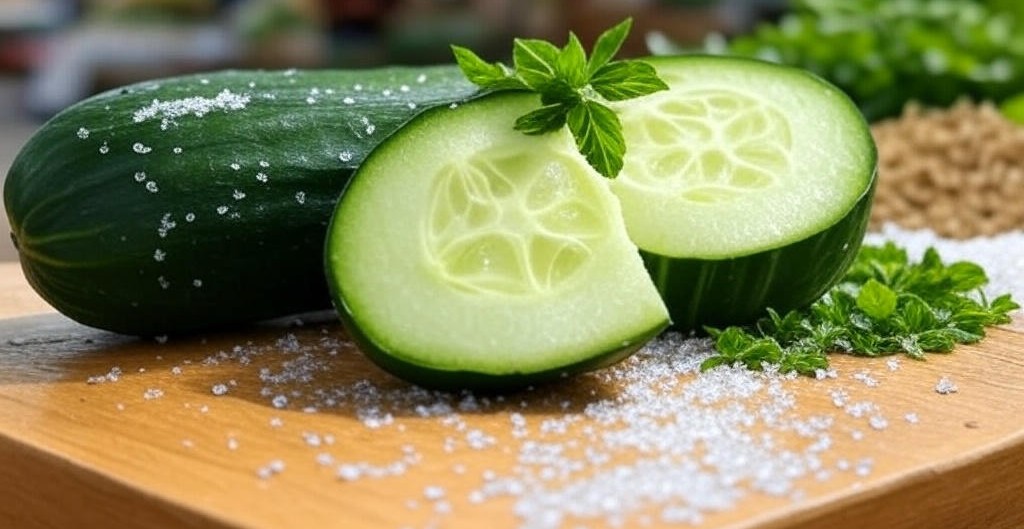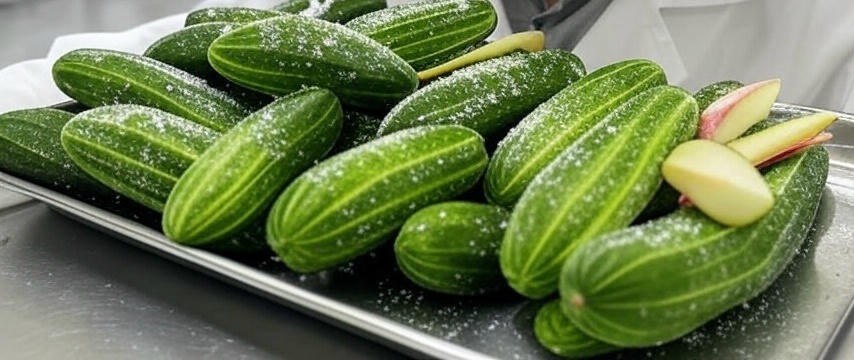Cucumbers are one of the most versatile vegetables in the culinary world—crisp, refreshing, and subtly flavored. But have you ever noticed how pairing them with certain foods can completely alter their taste? Sprinkle sugar on a cucumber, and suddenly, it evokes the sweetness of watermelon. Bite into a cucumber alongside an apple, and you might swear you’re eating rockmelon (cantaloupe). This fascinating phenomenon isn’t just a trick of the mind—it’s rooted in biology, chemistry, and sensory perception.
The Cucumber-Watermelon Illusion: A Sweet Deception
At first glance, cucumbers and watermelons don’t seem to have much in common. One is a mild, green vegetable, while the other is a juicy, sugary fruit. Yet, when sugar is added to cucumber, something magical happens—the flavor profile shifts dramatically.
The Role of Sugars and Aromatics
Cucumbers contain natural compounds called aldehydes, which are also present in watermelons. These aldehydes contribute to the fresh, green, slightly sweet aroma that both fruits share. However, watermelons have much higher sugar content, which masks some of the vegetal notes and enhances the fruity ones.
When you add sugar to cucumber, you’re essentially mimicking watermelon’s sugar levels, tricking your brain into associating the taste with watermelon. The sugar suppresses the cucumber’s natural bitterness while amplifying its underlying fruity aldehydes, creating an uncanny resemblance to watermelon.
Texture Plays a Part
Beyond flavor, texture also contributes to the illusion. Cucumbers and watermelons share a high water content and a crisp, juicy bite. The crunch of a sugar-coated cucumber slice closely mirrors the mouthfeel of watermelon, reinforcing the sensory deception.
Cucumber and Apple: The Unexpected Rockmelon Connection
If sugar transforms cucumber into watermelon, then why does eating it with an apple evoke rockmelon (cantaloupe)? This pairing is less about sweetness and more about flavor synergy.
Shared Flavor Compounds
Apples contain esters—volatile compounds responsible for fruity aromas—many of which are also found in rockmelons. When you chew cucumber and apple together, these esters mingle with the cucumber’s aldehydes, creating a new combined flavor profile that resembles rockmelon.
Additionally, apples have a mild tartness that balances the cucumber’s freshness, much like how rockmelon has a subtle musky sweetness with a slight tang. The interplay of these flavors tricks your palate into perceiving a cantaloupe-like taste.
The Power of Scent Memory
Our sense of taste is heavily influenced by smell. Apples release aromatic compounds as you chew, and when combined with cucumber’s mild aroma, they can trigger memories of rockmelon, which shares overlapping scent molecules. This olfactory cross-activation strengthens the illusion.
A Culinary Curiosity or a Scientific Phenomenon?
These flavor transformations aren’t just fun party tricks—they reveal how our brains interpret taste based on context. Food pairing science shows that ingredients sharing key volatile compounds can create entirely new flavor experiences when combined. Chefs and food scientists use this principle to craft innovative dishes, but you don’t need a lab to experiment.
Next time you snack on cucumbers, try them with different pairings—honey, mint, or even salt—and see how the flavor shifts. The humble cucumber is more than just a salad staple; it’s a blank canvas for taste illusions, proving that flavor is as much about chemistry as it is about perception.


